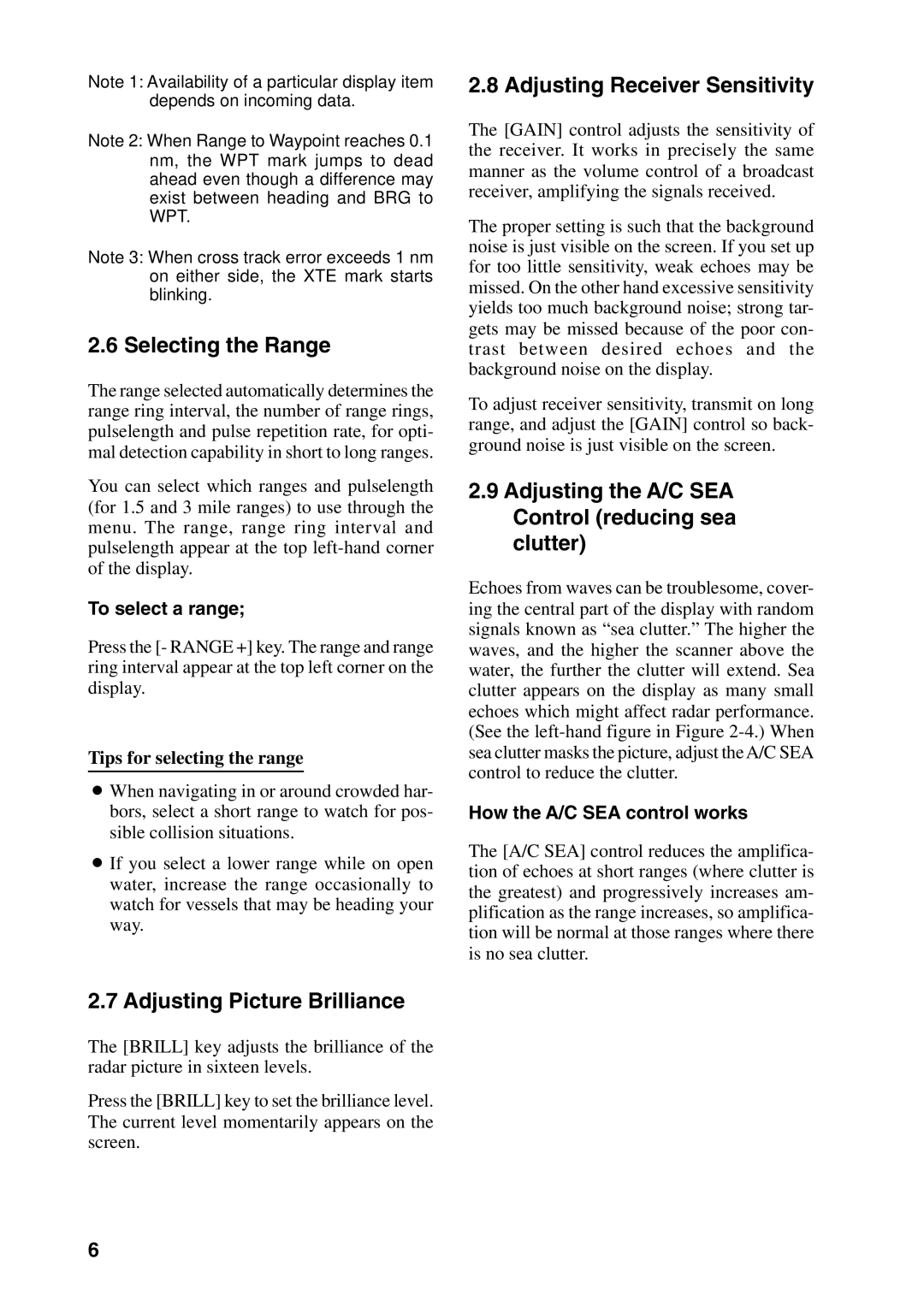Note 1: Availability of a particular display item depends on incoming data.
Note 2: When Range to Waypoint reaches 0.1 nm, the WPT mark jumps to dead ahead even though a difference may exist between heading and BRG to WPT.
Note 3: When cross track error exceeds 1 nm on either side, the XTE mark starts blinking.
2.6 Selecting the Range
The range selected automatically determines the range ring interval, the number of range rings, pulselength and pulse repetition rate, for opti- mal detection capability in short to long ranges.
You can select which ranges and pulselength (for 1.5 and 3 mile ranges) to use through the menu. The range, range ring interval and pulselength appear at the top
To select a range;
Press the [- RANGE +] key. The range and range ring interval appear at the top left corner on the display.
Tips for selecting the range
¡When navigating in or around crowded har- bors, select a short range to watch for pos- sible collision situations.
¡If you select a lower range while on open water, increase the range occasionally to watch for vessels that may be heading your way.
2.7 Adjusting Picture Brilliance
The [BRILL] key adjusts the brilliance of the radar picture in sixteen levels.
Press the [BRILL] key to set the brilliance level. The current level momentarily appears on the screen.
2.8 Adjusting Receiver Sensitivity
The [GAIN] control adjusts the sensitivity of the receiver. It works in precisely the same manner as the volume control of a broadcast receiver, amplifying the signals received.
The proper setting is such that the background noise is just visible on the screen. If you set up for too little sensitivity, weak echoes may be missed. On the other hand excessive sensitivity yields too much background noise; strong tar- gets may be missed because of the poor con- trast between desired echoes and the background noise on the display.
To adjust receiver sensitivity, transmit on long range, and adjust the [GAIN] control so back- ground noise is just visible on the screen.
2.9Adjusting the A/C SEA Control (reducing sea clutter)
Echoes from waves can be troublesome, cover- ing the central part of the display with random signals known as “sea clutter.” The higher the waves, and the higher the scanner above the water, the further the clutter will extend. Sea clutter appears on the display as many small echoes which might affect radar performance. (See the
How the A/C SEA control works
The [A/C SEA] control reduces the amplifica- tion of echoes at short ranges (where clutter is the greatest) and progressively increases am- plification as the range increases, so amplifica- tion will be normal at those ranges where there is no sea clutter.
6
